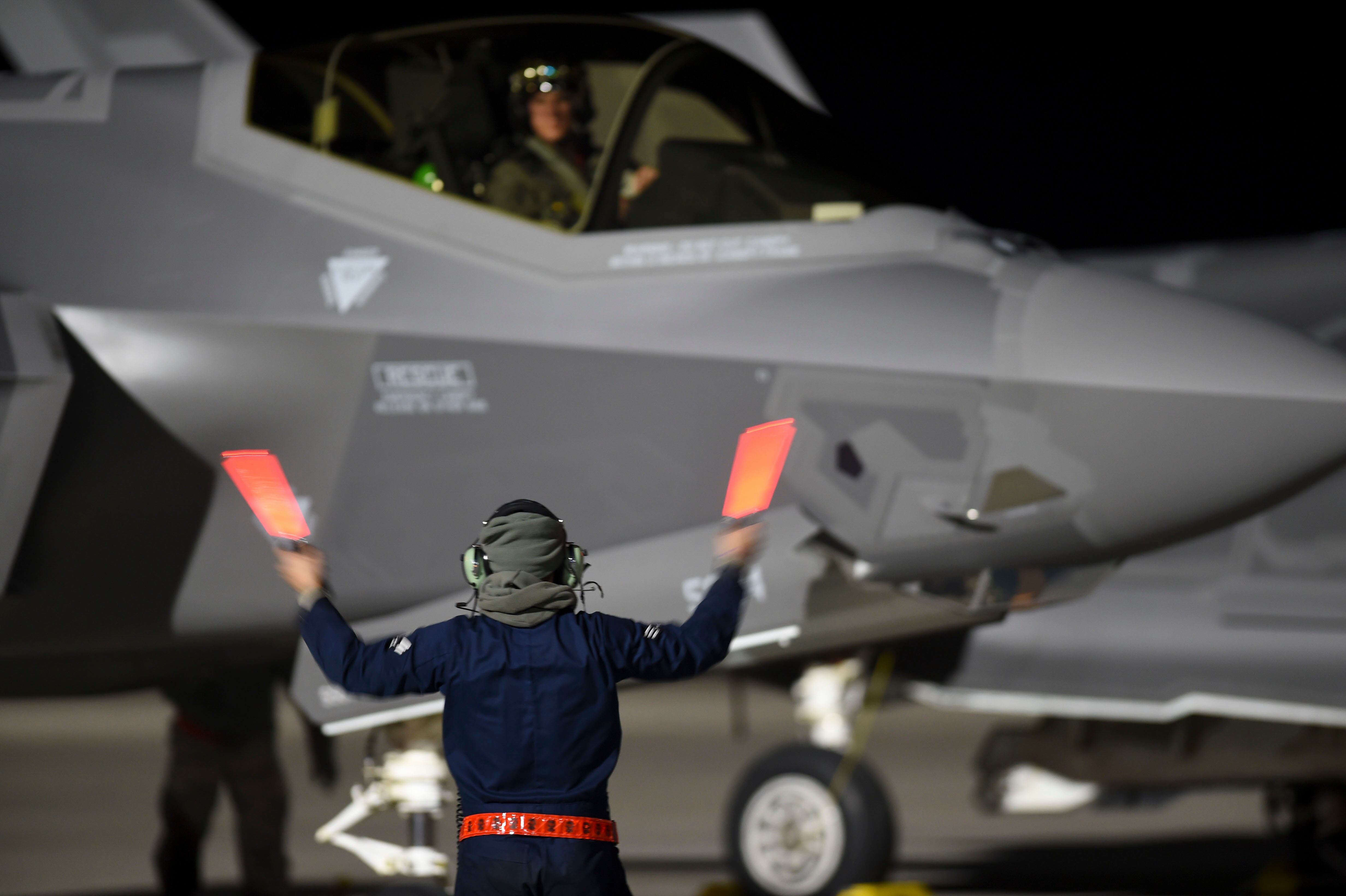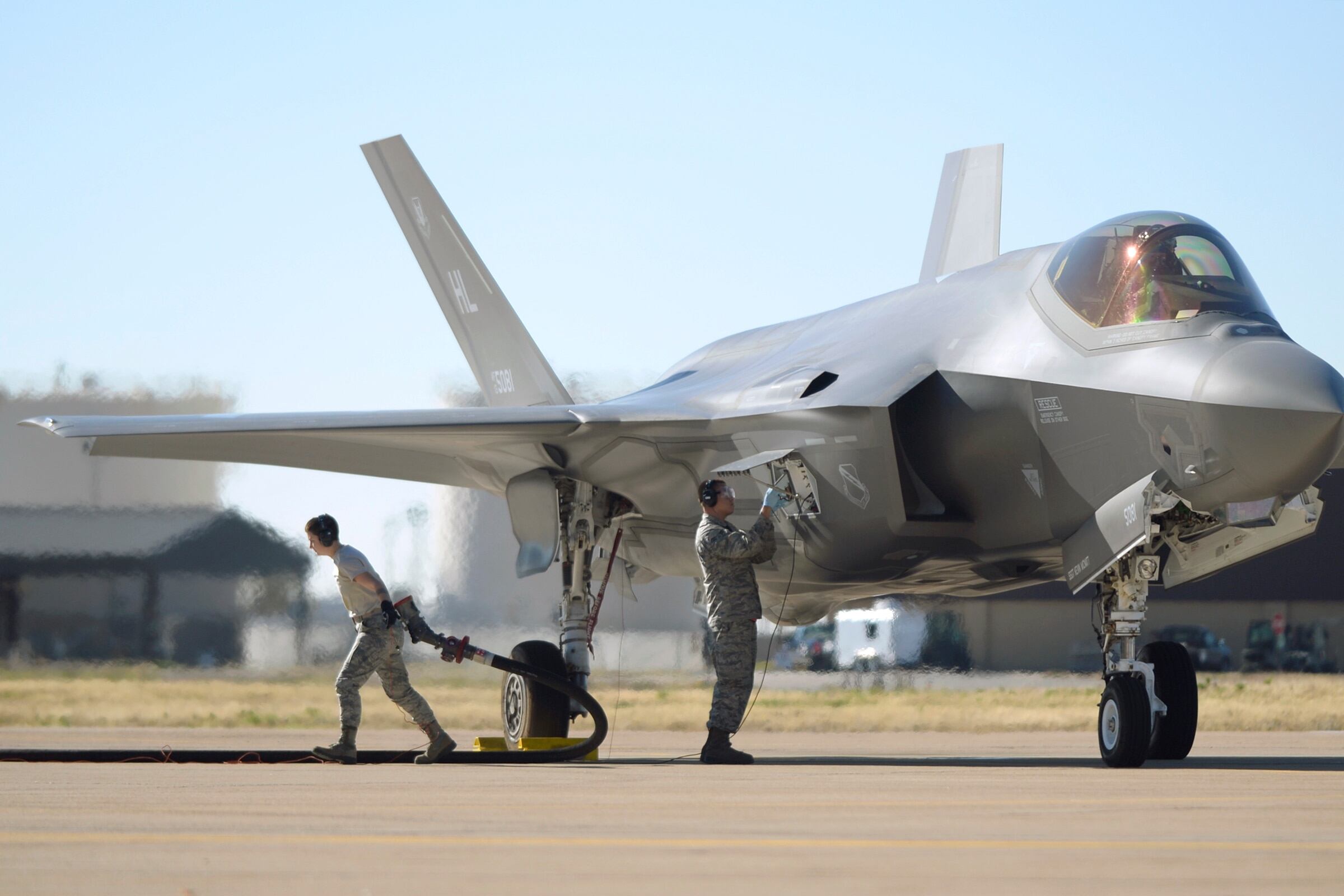WASHINGTON — By the end of the year, the F-35 program office will wrap up testing of a key munition that will allow U.S. Air Force F-35A jets to hit moving targets, the Pentagon’s F-35 program head said Sept. 18.
The director of the Air Force’s F-35 integration office told Defense News in February that the service hoped to integrate Raytheon’s GBU-49 munition into the “A” model’s weapons loadout in time for full combat capability.
Without it, the service would be left dependent on a range of munitions without “lead laser capability,” which allows the weapon to calculate the path of a moving target. GBU-49 has that ability built into its front end, while the F-35’s other munitions require that a pilot estimate where a target will move and aim there.
In an exclusive interview last week at the Air Force Association’s annual conference, Vice Adm. Mat Winter, head of the F-35 joint program office, that the effort is coming along quickly.
The Air Force’s F-35A is now able to carry the GBU-49 as long as it has 3F software, and the JPO has proven the jet can safely and accurately drop the bomb through weapons delivery tests, he said.
“We have done fit checks, we have done all of the other integration, all of the normal weapons integration — form, fit, function — of GBU-49 on the F-35A. And that was a collaborative effort of industry and the government together, which is a good news story,” Winter said.
RELATED

The aircraft’s most recent software iteration does not include specific interfaces for the munition. However, that will change at the end of the month, when the JPO begins rolling out a software update, termed 3FR6.3, to A-model jets used for developmental and operational tests.
“What it does is it provides the appropriate displays and information,” Winter said. “Right now, when you carry a GBU-49, it shows GBU-12 in the cockpit” because the weapons are basically the same in terms of size, weight and flight characteristics.
“Now the software will provide GBU-49 indications and the airplane knows it’s a [GBU-]49, that way you know you’re probably going against a moving target,” he added.
Once the new software is installed on developmental and operational test jets, the JPO will spend several months validating it through a series of flight tests. When that evaluation is complete — sometime in December for the F-35A, Winter said — the program office’s GBU-49 integration effort will be complete.
It may take months for the Air Force to roll out that software update to its operational fleet, which is just now starting to accept 3F jets.
“That doesn’t mean I couldn’t put GBU on an airplane if we had to do something right now. Because we could do that,” said Winter, who reiterated that should the F-35A be called to combat, it could drop the GBU-49 as long as it has 3F software.
Rather, the software update means that “full flight clearance [is] done, tie it with a bow, out the door,” he explained.
RELATED

During a February interview, Brig. Gen. Scott Pleus, then director of the Air Force’s F-35 integration office, said the F-35’s ability to hit moving targets would become vitally important as the joint strike fighter moves from its development phase to operational use.
“The ability to hit a moving target is a key capability that we need in current close-air support fight, and the GBU-49 is a great solution for the F-35 and, frankly, for all of our legacy platforms to hit these moving targets,” he said.
When the F-35’s requirements were first formed, the Defense Department intended for the joint strike fighter to drop cluster munitions to be able to hit moving targets. However, the U.S. military has stopped employing cluster munitions due to concern from human rights organizations, and the F-35’s electro-optical infrared system will not be upgraded with a lead-laser capability until follow-on modernization starts in the early 2020s.
Valerie Insinna is Defense News' air warfare reporter. She previously worked the Navy/congressional beats for Defense Daily, which followed almost three years as a staff writer for National Defense Magazine. Prior to that, she worked as an editorial assistant for the Tokyo Shimbun’s Washington bureau.







